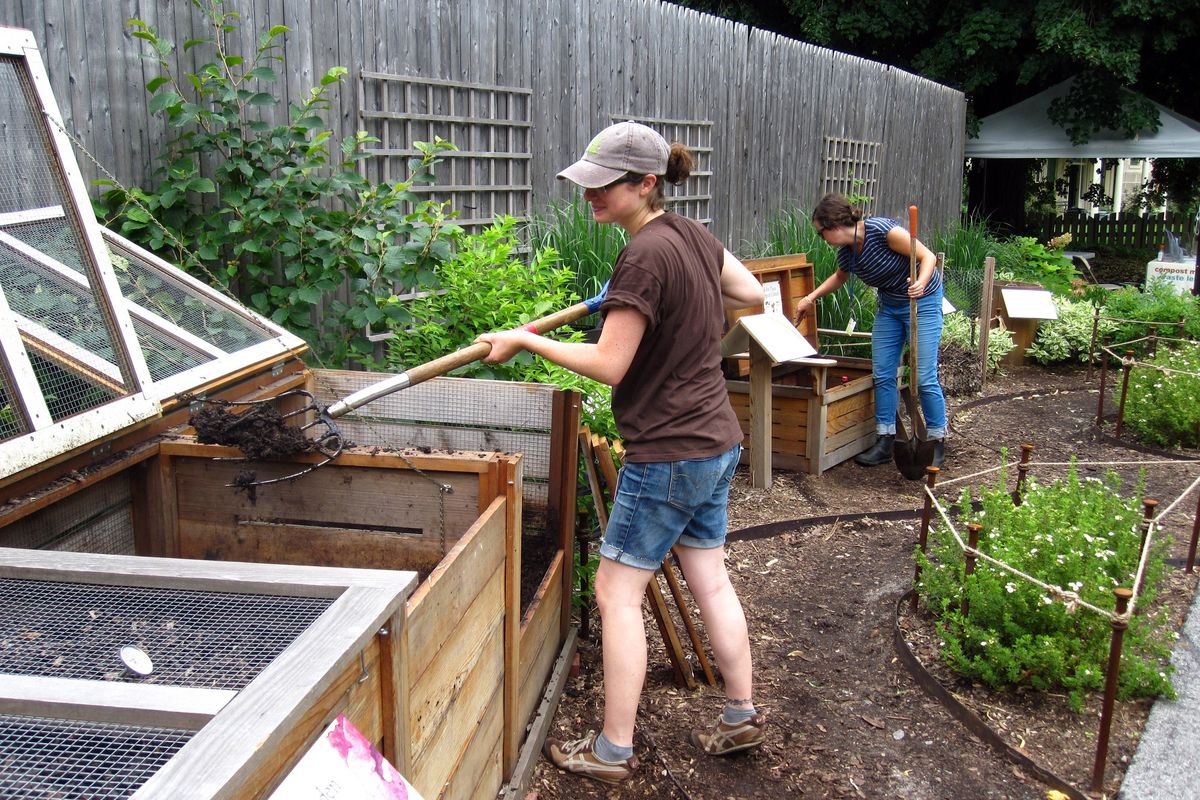Let it decay, the city way
Collection services, indoor bins make urban food composting easier

Composting and collecting kitchen scraps, once the province of those with gardens or space for a big, pungent, outdoor composter, is now being embraced by a growing number of apartment-dwellers.
The trend has been helped along by the development of small composters and organic waste bins designed to be short on size and odors and long on environmental impact. Some are even sleek and stylish.
A growing number of cities offer pickup or drop-off options for compost and food scraps, which make up an estimated 14 percent of the waste stream nationwide, according to the U.S. Composting Council. “Five years ago there really wasn’t much, but now lots of communities have options,” said Leanne Spaulding of the Bethesda, Maryland-based organization.
Almost 300 U.S. municipalities have food-waste collection programs, and over a hundred others have community-based programs, she said. Many more have drop-off sites for food waste or compost.
For those who want to start composting in their homes, the cheapest method is vermicomposting, which can be done in a small container using, yes, worms.
“It sounds gross, but they can eat a half pound of fruit and vegetable bits, eggshells and coffee grounds a day, and if you manage the composter well you should forget it’s even there,” said Teddy Tedesco, project manager for the New York City Compost Project, hosted by the Brooklyn Botanic Garden.
In a composter small enough for even the tiniest studio apartment, red wiggler worms, widely available online, process food waste, which is then cured and used to enrich soil. So long as the worms are not fed meat, dairy or grains, or kale, broccoli or cabbage, the odors are minimal, Tedesco said.
The New York City Compost Project, funded and managed by the city sanitation department, teaches communities about composting, offers technical support and sells inexpensive, apartment-friendly vermicomposters – basically small plastic containers topped with a screen or ventilated lid.
The general rule is 1 pound of worms per square foot of surface area of the composting bin. The resulting vermicompost (worm poop) is then moved to a separate container with a few holes punched in the lid to be cured, generally for about a week or so.
The nutrient-rich soil amendment produced by the little composters can be used to help feed houseplants as well as community trees and plants.
For those squeamish about sharing their home with worms and willing to spend a couple hundred dollars, a snazzy electric composter designed for small urban kitchens is also a possibility.
“These composters provide heat and continually move the compost, and the only organisms involved are the bacteria that are doing the decomposing,” Tedesco said. “Often they can include things like meat and dairy because they’re closed and use heat to help in the process.”
Electric composters generally include a mechanism that allows the processed food waste to fall to the bottom, where it cures before being used.
But for many, collecting food waste in small, sealed, countertop containers to be picked up or dropped off and then professionally composted remains the easiest way to compost in a city.
“This is a great way of getting food waste out of landfills until you’re ready to begin composting at home,” Tedesco said.
In Spokane, food waste can be put in yard waste bins, an optional service from the city’s solid waste department that runs March through November. Food scraps and food-soiled paper, including pizza boxes and paper towels, can be put in the bins for composting.